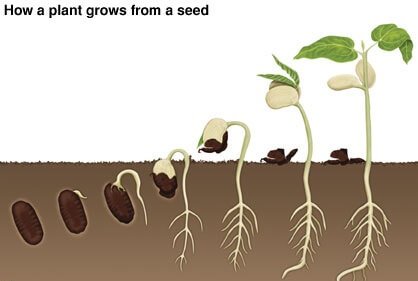What Is The Seed Cycle?
They may be small, but the seeds are huge in social networks right now. Seeds such as pumpkin and sunflower are promoted as the newest natural way for women to help regulate their hormones. Is there any truth to it?
The concept is called the seed cycle, and it involves eating different types of seeds at different times of the month with the hope of increasing fertility, relieving the symptoms of premenstrual syndrome and keeping the body healthy during menopause.
How it works: You eat a tablespoon of flaxseed and pumpkin seeds daily during the first two weeks of your menstrual cycle, then switch to pumpkin and sesame during the last two (menopausal women are supposed to use the moon phases as a guide). The idea is that the seeds contain natural plant compounds that can function as a weak estrogen in the body (useful for menopausal women who have low levels) or take out some estrogen and increase progesterone (which could help people who suffer of heavy things). periods).
If it seems like an easy solution, consider that there is very little research to show that the seed cycle really works. Some research has been done on individual seeds, such as this study that shows that flaxseed could influence the menstrual cycle. Researchers have also analyzed flaxseed to relieve menopausal symptoms, such as hot flashes. And one study found that sesame seed powder could positively impact hormonal levels (and help reduce cholesterol) in menopausal women. But that does not mean that the seed cycle will cure things like infertility or irregular periods.
As for the “easy” part, maybe not so much. To do it well, you must buy whole and raw seeds and grind them fresh yourself, keep track of the seeds you are eating and then find ways to incorporate them every day. That daily seed routine can also be expensive.
The seed cycle advantage: it is probably harmless, and the seeds are small but powerful when it comes to nutrients. These are some of its benefits and how to work them:
Sunflower seeds: they are rich in phytosterols, which are plant chemicals that naturally block the body from absorbing part of cholesterol. A quarter cup also has seven grams of protein (which is about the same amount as an ounce of beef).
How to eat them: sprinkle the salads, stir in the muffin dough, enjoy while the sunflower seed butter is spread on apple slices or toast.
Flaxseed: contain ALA, an omega-3 fatty ALA; It’s not the same type found in fish, but it’s still heart healthy. Buy it ground (or grind it yourself) to get the health benefits.
How to eat them: Replace ¼ flour in baking recipes with flaxseed flour, mix a tablespoon in shakes or exchange a normal egg in recipes for a “flaxseed egg” (1 tablespoon of flaxseed + 3 tablespoons of water).
Sesame seeds: they contain protein, fiber, healthy unsaturated fats and phytosterols that block cholesterol.
How to eat them: mix the seeds on the fries, sprinkle on steamed vegetables such as broccoli or peas, or immerse yourself in a little hummus (one of its main ingredients, tahini, is made from ground sesame seeds).
Pumpkin seeds: Pumpkin seeds without shell are green and are called pips. A quarter cup has eight grams of protein (the same as a glass of milk) plus iron and potassium.
How to eat them: stir in homemade granola, add to the oatmeal, mix in a bowl of grains or vegetables.
Topics: Nutrients, Ingredients, seed cycling, pumpkin seeds, flaxseed, sesame seeds, menopause, menstrual cycle, menstruation, period, hormones
To know more about Online medicine and buy medicine online visit us at https://rxgenericmedicines.com/



Leave a Reply